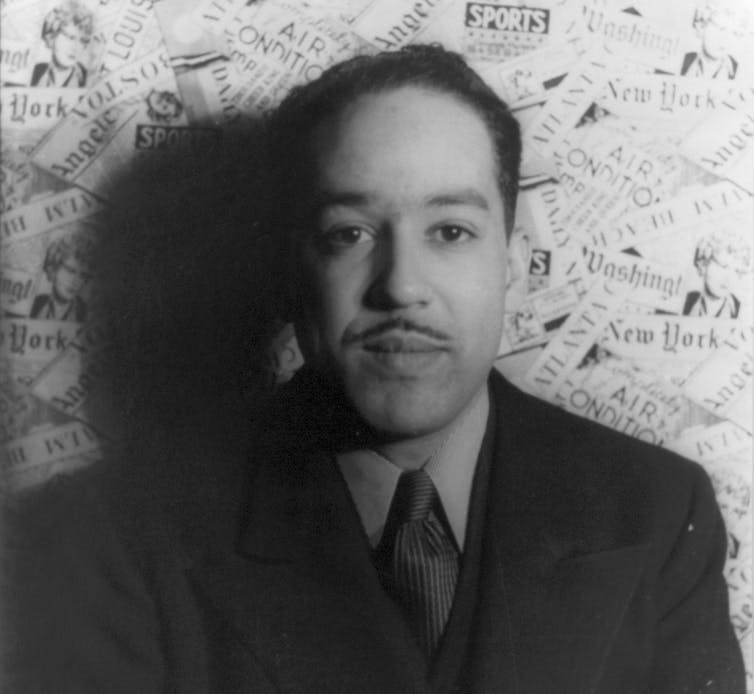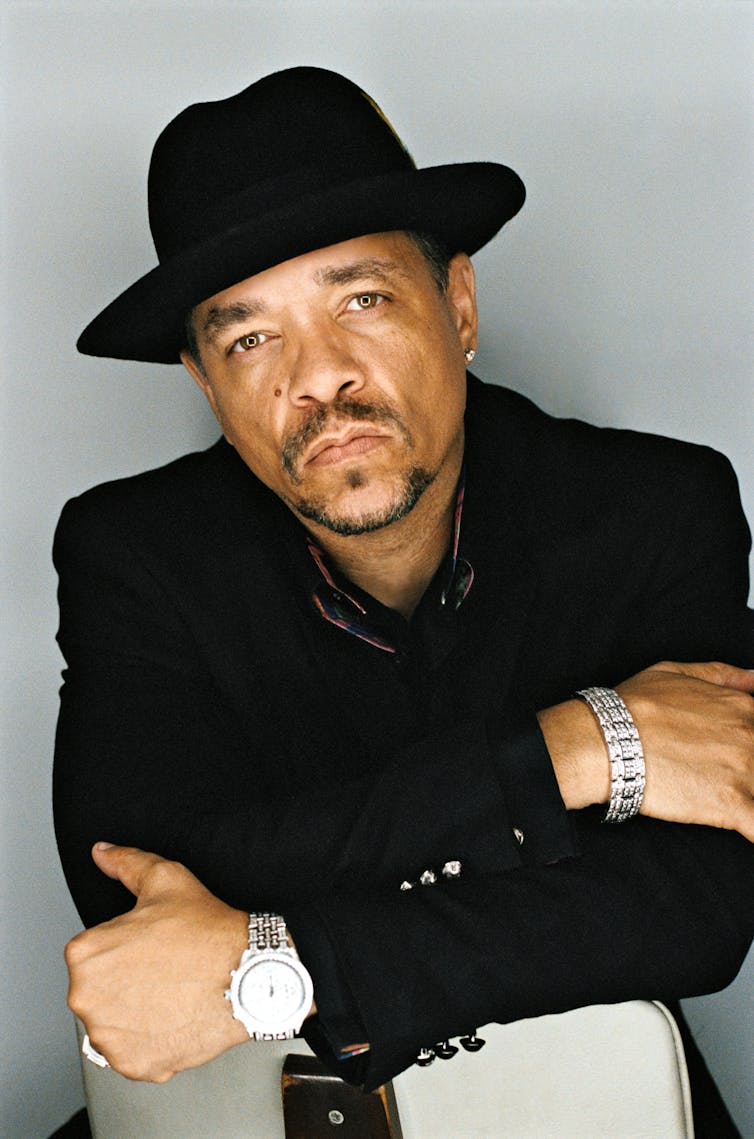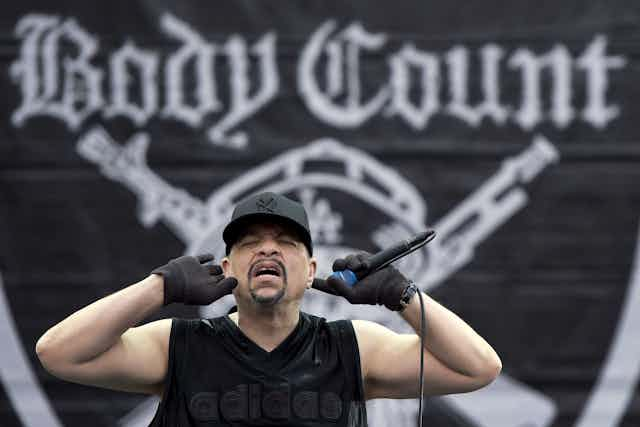The American rapper Ice-T recently performed a 1961 Langston Hughes poem, “Ask Your Mama”, in a London concert hall. This might seem like a very odd recipe: a Californian rapper, at an international jazz festival, performing the work of Hughes, an American literary great who is renowned for his pioneering “jazz poetry”.
But in fact these are both men who bring into focus an African American cultural tradition that fuses cultural forms both “high” and “low”, oral and literary. In its promotional material for the event, the Barbican deemed Ice-T to be Hughes’s “21st century counterpart”. Others have made similar points, notably the cultural critic Robin Means Coleman, who noted that the work of both Ice-T and Hughes seeks to articulate a “viable, unique artistic view of the black experience”.
Hughes is the laureate of the Harlem Renaissance, a 1920s and 30s cultural movement of painters, novelists, musicians, intellectuals and poets, united in a desire to produce a more authentic expression of African American race consciousness. From the 1926 publication of his first volume of poetry, The Weary Blues, to his death in 1967, Hughes pursued this goal across multiple forms (poetry, fiction, plays, essays) and throughout a turbulent period of race relations. As he memorably wrote in 1926:
We younger Negro artists who create now intend to express our individual dark-skinned selves without fear or shame. If white people are pleased, we are glad. If they are not, it doesn’t matter. We know we are beautiful. And ugly too. The tom-tom cries and the tom-tom laughs.

As one of the founders (or “OGs”) of West Coast Gangsta Rap, Ice-T can also be described as a pioneer of black urban cultural expression. Since his emergence as a rapper in the mid-1980s, his career has encapsulated hip hop’s rise and diversification into multiple forms (film, reality TV, video games, even rock music), and its ability to give an uncompromising voice to the post-industrial African American experience. Echoing the defiance of Hughes, Ice-T has said:
I rap about my life, and I rap about it in the hardest, most blatant sense. I consider what I say as real. This is the way the world I come from is. This is the way I talk and I live. This is the only way I can be.
Breaking down barriers
Most centrally, Hughes and Ice-T are connected by a shared desire to violate the conventional (hierarchical) categories of cultural production; in particular, the boundary between oral and literary forms. Hughes’s poetry often centres on the musical space of the jazz bar and cabaret, incorporating motifs of urban blues and (later) bebop jazz music. Similarly, Ice-T describes himself as “one of the better storied rhymers”, crediting his rapping style and “pimp” persona to the influence of African American pulp crime writers Donald Goines and Iceberg Slim (from whom he derived his moniker). His recent moves into autobiographical and fiction writing further demonstrates this interface between black literary and oral forms.
Both have prompted fierce debates regarding the racialised boundaries of American culture, and the ethics of “cross-over” success. In 1926, Hughes was accused by fellow writer George Schuyler of producing exotic and primitivist images of black urban life for white bourgeois publishers and readers. In the early 1990s, Ice-T became the focal point of a similar debate over gangsta rap’s absorption into the conglomerated music industry, and its perceived decline into what scholar Bakari Kitwana called a “cultural safari” for white suburban audiences.
We might be tempted to read Ice-T’s performance of a (now) celebrated work of African American art as an attempt to assert both his and Hughes’s racial and cultural legitimacy. But there’s more to it than that. The poem asks us where we draw the line between autonomous and appropriated black cultural forms.
Characteristically, Hughes’s “oral poem” focuses on the conversation, rather than the answer, foregrounding dialogue and interplay. Crucially, it encompasses an assortment of racial and national voices, from the music of black America to Anglo-American (battle) hymns, Latin American cha-cha, German Lieders, and Caribbean Calypso. These musical disjunctures underscore the notion of a contested cultural space. As the speaker reminds the audience: “CULTURE, THEY SAY, IS A TWO-WAY STREET.”

High art rap
That Ice-T has performed this speaking role also encourages us to think about the cultural exchange between jazz and hip hop. They are arguably two of the most popular and controversial African American musical forms of the last century. Both offer innovative forms of expression that are rooted in historical and social inequalities. One journalist has suggested that rap is today undergoing the “highbrowification” that jazz did, while scholars have identified that the subgenre of “high-art” jazz rap has existed since the 1980s.
Perhaps most crucially, both musical forms speak to the collective will of African American urban artists to bring the socio-political experiences and struggles of black urban communities into “white” cultural spaces. In the 1920s, Hughes was accused of being apolitical. Yet by the time of Ask Your Mama in 1961, the Civil Rights Movement was underway and Hughes’s work exerted a more pronounced political consciousness. In the fourth section of Ask Your Mama, Hughes conjures memorable images of ghettoisation and the social-racial power relations that have produced and delimited black urban space:
WHITE FOLKS’ RECESSION
IS COLORED FOLKS
DEPRESSION
Though Ice-T has regularly positioned himself as a pimp figure and an artist concerned with material success, he has also demonstrated a critical self-consciousness that has stimulated discussion about racial identity and resistance. Perhaps most famously, his controversial 1992 protest song, “Cop Killer”, highlighted the fact that America was far from being beyond race.
His rendition of a Harlem literary great in 2015 has the same effect, reminding us of the American legacy of interracial exchange, tension, and exploitation.

